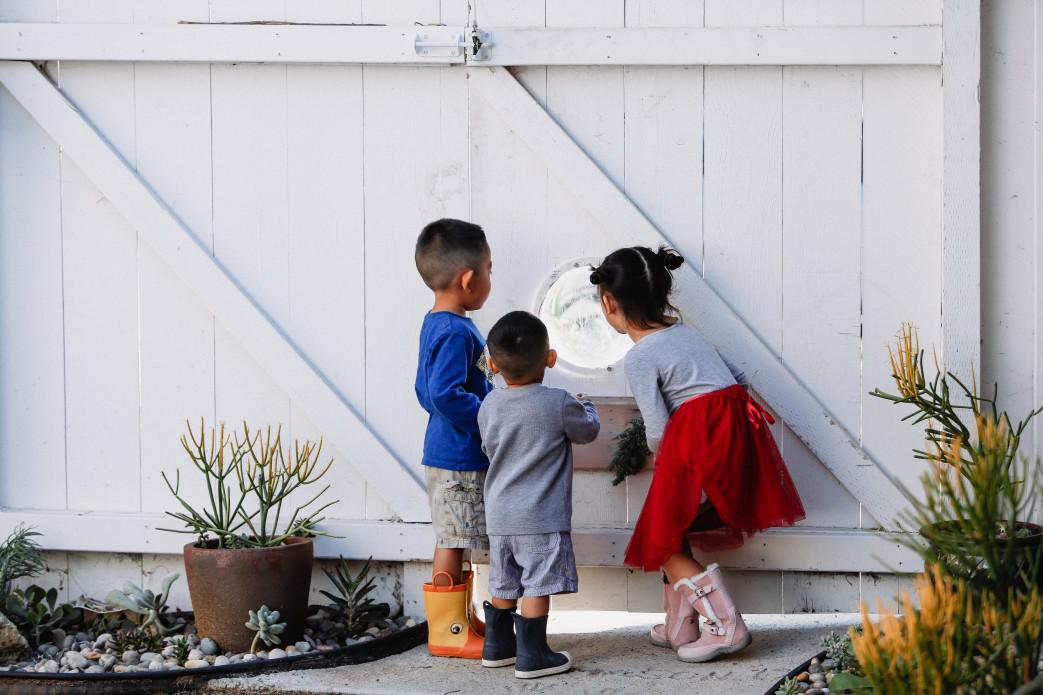How to encourage kids to take turns

Taking turns can be a tough skill to master, but it's an important part of life.
Table of Contents
Taking turns can be a tough skill to master, but it’s an important part of life. From waiting for your turn to play a board game to waiting for your turn at the grocery store, this kind of patience can be a struggle for both kids and adults.
The logistics of taking turns—I go, then you go, then I go again—are relatively simple, but they require a lot of communication and control. Yes, this is easier said than done when dealing with little ones, but it’s a worthy goal to accomplish. When we step back to allow another person to take their turn, or when we step forward to advocate for ourselves, we’re all acting in alignment with a larger idea of fairness and equality. As children develop these important turn-taking skills alongside emotion regulation and cooperative play, we help set them up for future success.
Remember—modeling taking turns with children is also a great way to strengthen your parent-child bonds and facilitate language development. So get ready to flex your patience because you’ll want to show how it looks to wait your turn.
What does taking turns look like?
3-4 years old
- Have a chat. A great way to practice turn-taking with children is to just have a conversation with them. Children naturally look for reactions when they speak. Will you laugh at their joke? Are you listening to their story? They also react based on what they’re hearing and the comments of others. Help point things out like verbal comments or a change in body language as you take turns talking.
- Wait in line. Waiting is hard, especially when there’s a line involved, but children can learn how to do it. Talk to them about waiting in line at the slide or at the sink to wash their hands. The longer the line, the harder it is to wait! Start with small lines to help them feel more successful and confident before tackling long ones.
- Play games. All children learn to take turns with toys. They also learn this in games like hide-and-go-seek, catch, and board games. Play a game with your child. When they do take turns successfully, praise them to reinforce the behavior.
4-5 years old
- Play a multi-person game. Games with multiple players sets up a default structure of positive turn-taking behavior. As they get into the game, they’ll require fewer prompts or reminders to take turns.
- Encourage problem-solving. Children often identify turn-taking as a way to solve a social problem. This is a great skill for them to practice on their own. When both children want a turn with a toy, children might solve the problem by assigning turns or creating a waiting list for the prized object.
5-6 years old
- Let kids be the experts. Children are typically fully cooperative players at this stage. They can incorporate a partner’s input into their play with regularity, negotiate rules and roles in their play, and work together to solve problems. Encourage them to take on this expert role, and you might be surprised at how much they excel.
- Encourage kids to plan ahead. At this age, children are better able to think ahead, make plans, and reason about fairness. Their turn-taking may focus less on material objects and more on friendship and social understanding: “They helped me when I fell, so I will get them a Band-Aid the next time they’re hurt.”
How to encourage taking turns at home
- Play games! Want to be active? Tag, soccer, and hide-and-seek are all great ways to practice taking turns while moving around. Board games and card games are excellent, too. Start with games that require 2-3 players, and then build up as your child becomes more successful with turn-taking. Playing together with toys is also a great way to take turns with prized toys.
- Get social with role-play. Act out situations that involve pairs (e.g. doctor and patient, waiter and diner, singer and audience, caregiver and baby). This is a good way to promote social turn-taking.
- Practice storytelling. Have fun and encourage imagination by telling stories together. Take turns making up parts of a story, and see how silly it can get!
- Talk about your day. Model effective talking and listening skills in your daily conversations. Remember some silence is okay because we all need that space for processing and responding.
- Practice patience. Play games that help build inhibitory control (e.g. stopping and starting games like red-light, green-light or Simon Says) at home, and while you’re out and about.
- Bring turn-taking into daily activities. Think of ways you can incorporate taking turns into everyday situations, from cooking dinner (I’ll add a tomato into the salad, then you add one), to enjoying a snack (I eat a cracker, now you eat one), to cleaning up toys (I pick up a toy, then you pick up a toy).
This really can be a challenging skill for kids to master, but it’s worth the effort. If your child doesn’t succeed right away or you’re met with resistance, don’t give up. Little by little, they’ll get the hang of it, and you’ll see the many social and emotional rewards.
Originally posted on OK Play.
This article features advice from the psychologists, educators, and experts at OK Play. They believe play-based education in early childhood is crucial for positive social, emotional, and cognitive development. Download the app here.


































